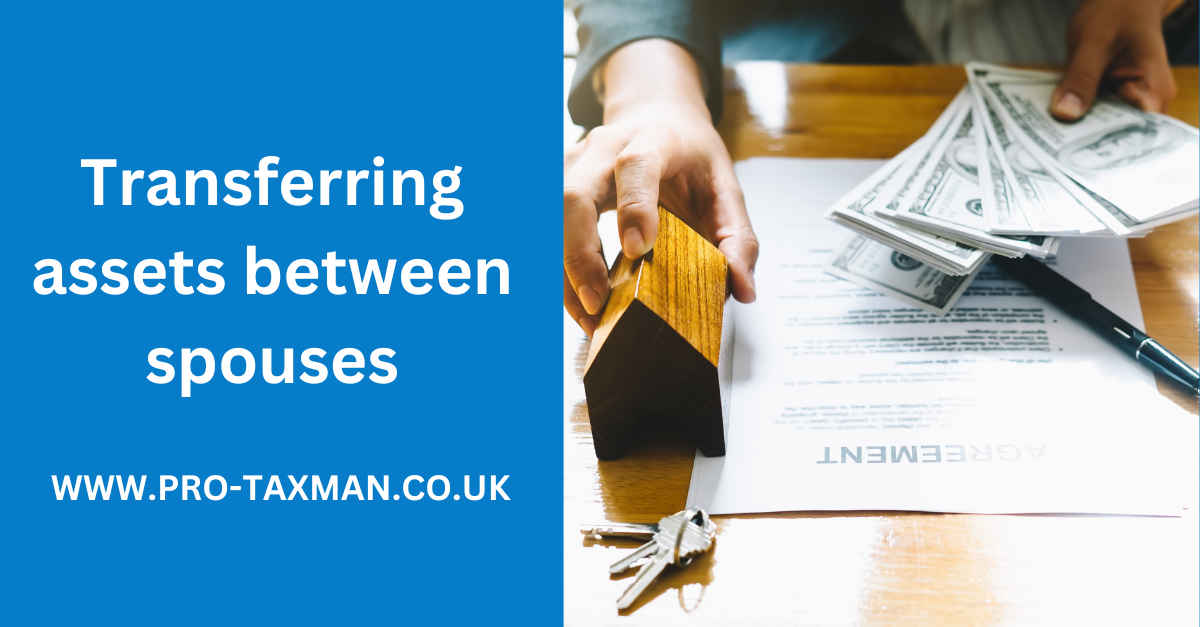Although spouses and civil partners are taxed independently, there are some tax breaks available. One of these is the ability for spouses and civil partners to transfer assets between them at a value that for capital gains tax gives rise to neither a gain nor a loss.
This can be very useful from a tax planning perspective.
No gain/no loss rule
The no gain/no loss rule essentially means that where an asset is transferred from one spouse to another, the value of that asset is equal to the transferor’s base cost. This is the case regardless of whether there is any actual consideration and the amount of that consideration. Unlike other transfers between connected persons, the market value rule does not apply.
The effect of this rule is that any gain that has accrued while the transferor has owned the asset is passed to the transferee and is not chargeable on the transferor. The gain does not crystallise until the asset is disposed of outside the marriage or civil partnership.
Example
Peter purchased a painting in 2013 for £6,500. In 2018, he transferred the painting to his wife Pauline. At that time, the painting was worth £9,000. Pauline sells the painting at auction in August 2022 for £12,000.
When Peter transfers the painting to Pauline in 2018, it is deemed to be transferred at a value of £6,500. This is the Peter’s base cost and the value that gives rise to neither a gain nor a loss. Pauline assumes Peter’s base cost of £6,500. There is no capital gains tax to pay on the increase in value of £2,500 during Peter’s period of ownership.
When Pauline sells the painting in 2022, the full gain of £5,500 is chargeable (£12,000 – £5,000). Pauline is liable for the full gain, not just the increase in value since she acquired the painting.
Pauline realises no other gains in the tax year, and the gain is sheltered by her annual exempt amount.
If the painting had fallen in value to below £6,500, Pauline would have the benefit of the loss.
Tax planning opportunities
This rule opens up a number of tax planning opportunities.
- Access unused annual exempt amounts
Transferring an asset or a share in an asset prior to disposal can access a spouse or civil partner’s unused annual exempt amount. The annual exempt amount for 2022/23 is £12,300. Using this strategy can save the couple up to £2,460 in tax (£12,300 @ 20%), or £3,444 for residential property gains (£12,300 @ 28%).
- Make use of a lower tax band
Where a gain cannot be fully sheltered by available annual exempt amounts, if the spouses/civil partners have different rates of tax, the no gain/no loss rule can be used to share the chargeable gain so that it is taxed at the lowest rate of tax. For example, by taking this route, it may be possible to reduce the tax paid on some or all of the gain from 20% to 10%, or for residential property gains, from 28% to 18%.
- Change income allocation
Income from an asset owned jointly by spouses and civil partners is taxed 50:50 regardless of the actual ownership shares, unless a Form 17 election is made. However, to ensure that income is taxed at the lowest possible marginal rates, the no gain/no loss rules can be used to change the underlying ownership to the desired shares. A Form 17 election can then be made so the individuals are taxed on the income by reference to those shares.
- Access business asset disposal relief
Business asset disposal relief reduces the rate of capital gains tax to 10% on qualifying gains up to the £1 million lifetime limit. Each spouse or civil partner has their own limit. To access each partner’s limit, assets or shares can be transferred from one spouse or civil partner to the other prior to the disposal of the business or its shares. However, remember the conditions must be met for two years prior to the disposal meaning it is necessary to plan ahead.
Need professional accounting service or accounting advice? Contact us to book a 15-min Free Consultation with us today.
To find out more please follow us on Facebook, Twitter, or LinkedIn. Feel free to contact us on 0333 006 4847 or request a call back by texting 075 6464 7474

